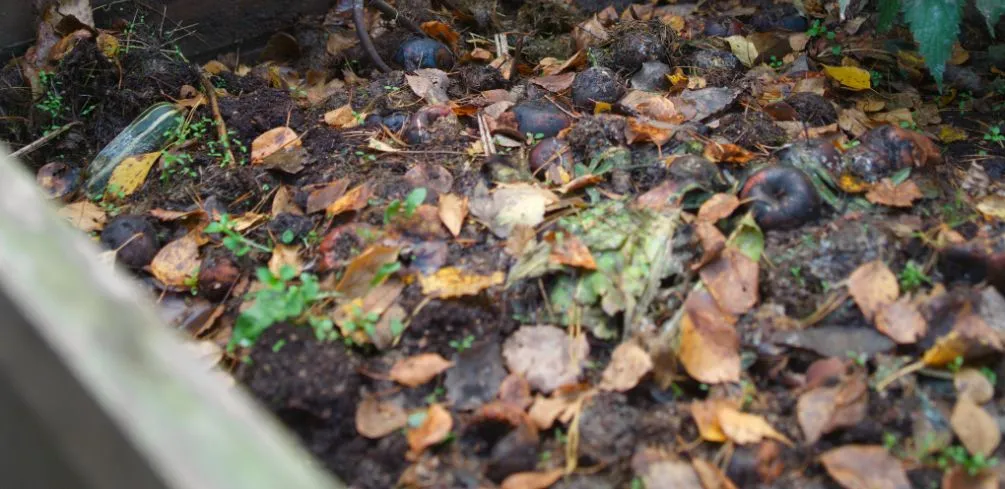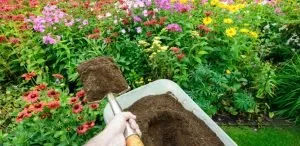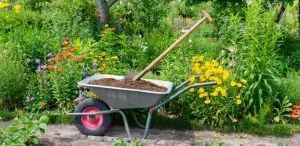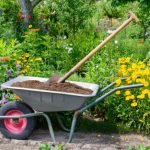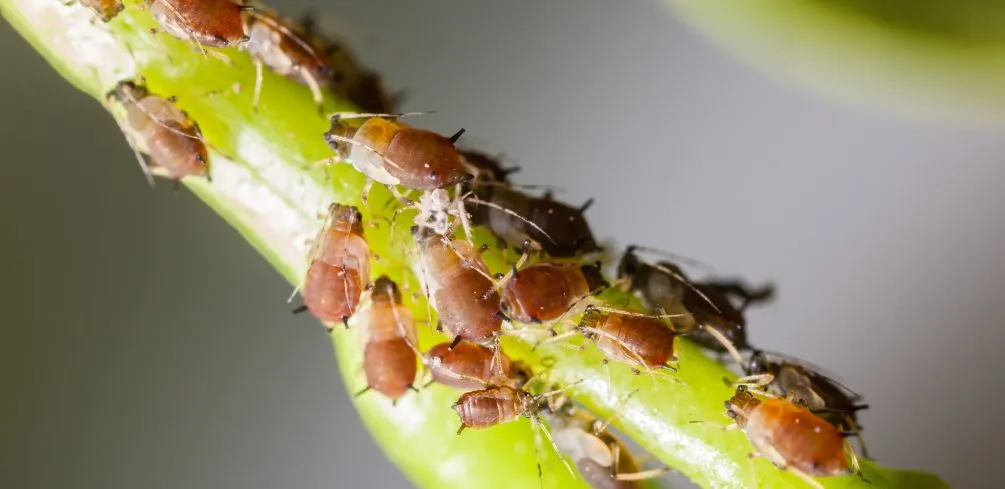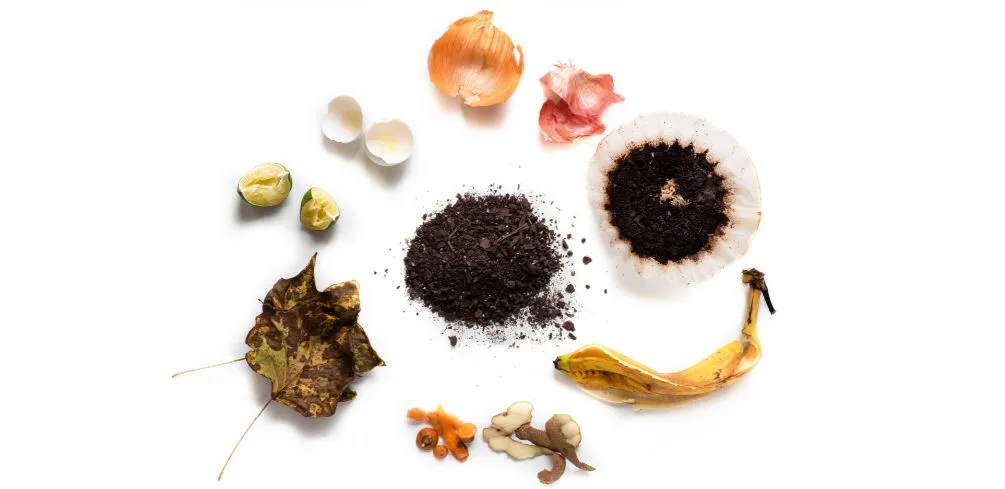Composting is an essential process for reducing waste, enriching the soil, and producing organic fertilizers. It involves the decomposition of organic matter, which is aided by microorganisms that break down the materials into nutrient-rich compost.
However, maintaining the right moisture level in your compost bin can be a daunting task. Too much moisture can lead to a foul smell or even cause anaerobic conditions, while too little moisture will slow down the decomposition process. Therefore, it is crucial to balance compost moisture to ensure optimal conditions for healthy and efficient composting.
As more people are becoming conscious of their impact on the environment, composting has become increasingly popular as a sustainable practice. However, many beginners struggle with finding the right balance of moisture in their compost bins.
This article aims to provide an in-depth overview of how to balance compost moisture effectively. We will explore various techniques that you can use to monitor and regulate moisture levels in your compost pile while highlighting some common mistakes to avoid.
By following these tips, you’ll be able to create high-quality compost that enriches your soil and reduces waste – all while being a part of a community dedicated to protecting our planet’s natural resources.
Understanding The Importance Of Compost Moisture
Compost moisture is like the lifeblood of any successful composting operation. It is a critical component that determines the overall quality and effectiveness of the finished product. Just as a well-hydrated body is essential for optimal health, so too is proper compost moisture crucial for achieving desirable outcomes.
The importance of balance in compost moisture cannot be overstated. Too much or too little water can have negative effects on decomposition rates and nutrient content. Moisture management techniques for better composting include monitoring and adjusting watering schedules, using cover materials to retain moisture, and adding dry materials to absorb excess water.
Achieving the right balance requires diligence and attention to detail, but the rewards are worth it: faster decomposition times, increased microbial activity, and nutrient-rich soil amendments that promote healthy plant growth.
Monitoring Moisture Levels In Your Compost Bin
Understanding the importance of compost moisture is crucial in maintaining a healthy and productive compost pile. As discussed in the previous section, proper moisture levels can help promote microbial activity and decomposition, while also preventing unpleasant odors and pests from forming.
However, it’s not just about keeping your compost moist – it’s also important to monitor its moisture levels over time. One way to do this is by using compost moisture sensors. These devices can help you determine when your pile needs watering or when it’s too wet, allowing for optimal conditions for decomposition.
Alternatively, there are DIY moisture control solutions that can be used, such as adding dry materials like leaves or newspaper to absorb excess moisture or creating a cover to protect the compost from rainwater.
By monitoring and adjusting the moisture levels in your compost bin, you’ll be able to create nutrient-rich soil amendment that will benefit your garden for years to come.
- Use compost moisture sensors to accurately measure the amount of water present in your pile.
- Add dry materials like leaves or newspaper to absorb any excess moisture.
- Create a cover to protect your compost from rainwater and other external factors.
- Rotate your pile regularly to ensure proper mixing of wet and dry materials.
Overall, maintaining proper moisture levels in your compost bin is crucial for successful decomposition. By using tools like compost moisture sensors or implementing DIY solutions such as adding dry materials and creating covers, you’ll be able to create healthy soil amendment that will improve plant growth and yield.
Remember: a little bit of effort now can lead to big rewards down the road!
Techniques For Adding Moisture To Your Compost Pile
One of the most fundamental aspects of composting is ensuring that your pile has the right amount of moisture. If your compost heap is too dry, it can slow down the decomposition process, and if it’s too wet, it can become anaerobic and start to smell. Luckily, there are many techniques you can use to add moisture to your compost pile.
One way to add moisture is by using misting sprayers. These are handheld devices that spray a fine mist of water over the compost pile. Misting sprayers are a great option if you need precise control over how much water you’re adding to your compost heap. They allow you to add just enough water to get your pile moist without making it too wet.
If you don’t have a misting sprayer on hand, you can also use a watering can or hose with a gentle spray nozzle. Be sure not to add too much water at once, as this can lead to anaerobic conditions in your pile. Instead, add water slowly and mix it into the compost thoroughly before checking for moisture levels again.
Another option for adding moisture to your compost pile is relying on natural sources of water. Rainwater is an excellent source of moisture for your compost heap. If you live in an area with frequent rainfall, you may not need to worry about adding additional water at all!
Similarly, if you’re using kitchen scraps or other organic materials that contain high levels of moisture, such as fruits and vegetables, they will naturally contribute to the overall moisture content in your pile. Keep an eye on the weather and the types of materials you’re adding to your heap so that you can adjust accordingly and maintain optimal levels of moisture in your compost pile.
Tips For Reducing Excess Moisture In Your Compost
Excess moisture in compost can lead to unpleasant odors, slow decomposition, and the growth of harmful bacteria. To ensure that your composting process remains efficient and effective, it is essential to take steps to reduce excess moisture.
Here are some tips for reducing excess moisture in your compost:
- Using dry materials: One of the simplest ways to reduce excess moisture in your compost is by adding dry materials such as straw, wood chips, or leaves. These materials will absorb excess moisture and help balance out the water content of your compost.
- Aerating compost: Proper aeration is essential for maintaining an optimal level of moisture in your compost pile. By turning over the pile regularly or using a pitchfork to poke holes into it, you can increase airflow and promote better drainage.
In addition to these tips, it is also essential to monitor the amount of food waste you are adding to your compost pile. Food waste contains a high amount of water content which can contribute significantly to excess moisture buildup.
By balancing out the food waste with other dry materials such as paper or yard waste, you can help prevent excessive moisture from becoming a problem for your composting process.
Reducing excess moisture is key when it comes to maintaining healthy and efficient compost. By incorporating these tips into your routine, you can improve the quality of your soil and ensure that your plants thrive with nutrient-rich soil that has just the right amount of moisture content!
Common Mistakes To Avoid When Balancing Compost Moisture
When it comes to composting, balancing moisture levels is a critical aspect that requires attention. The right amount of moisture aids in the decomposition process by providing an environment suitable for microorganisms to thrive.
However, it is common for many individuals to make mistakes when trying to balance compost moisture levels. These mistakes can negatively impact the compost’s quality and result in unpleasant smells, slow decomposition rates, and even attract unwanted pests.
One common mistake people make is adding too much water or not enough water to their compost pile. Both scenarios can lead to imbalanced compost moisture distribution, which affects the optimal moisture levels required for efficient decomposition.
To avoid this mistake, it is essential to monitor the compost regularly and add water in small increments as needed while ensuring that the pile remains damp but not soaked. Another error people make is failing to cover their compost piles during heavy rainfalls or snowstorms.
This oversight leads to over-saturation of the pile, resulting in anaerobic conditions that hinder microbial activity necessary for decomposition. It is crucial always to cover your compost pile when the weather forecast predicts excessive rainfall or snowfall.
| Common Mistakes | Effects | Solutions |
|---|---|---|
| Too much water | Slow decomposition rate and unpleasant smell | Monitor moistness level and add water incrementally |
| Over-saturation leads to anaerobic conditions | Over-saturation leading to anaerobic conditions | Cover your compost piles when necessary |
In summary, balancing compost moisture levels can be challenging but is vital in achieving high-quality humus for gardening purposes.
Common mistakes such as adding too much or too little water and failing to cover your piles during extreme weather conditions can affect optimal moisture levels required for efficient decomposition. By avoiding these pitfalls and regularly monitoring your compost, you can ensure a healthy microbial community within your pile that will result in high-quality humus suitable for gardening needs.
Frequently Asked Questions
What Is The Ideal Moisture Level For Compost?
The ideal moisture level for compost is crucial to its success, as it can affect microbial activity, decomposition rates, and overall nutrient content. Ensuring adequate moisture levels in compost can lead to numerous benefits, such as improved soil structure and increased plant growth.
To maintain proper moisture levels, one should consider factors such as the type of materials being composted, weather conditions, and proper aeration. Tips for maintaining adequate moisture include adding water or dry materials as needed, covering the pile during heavy rainfall, and monitoring moisture levels regularly.
By following these guidelines, composters can achieve optimal results and contribute to a healthier environment.
How Often Should You Check The Moisture Level In Your Compost Bin?
Checking the moisture level in your compost bin is an essential task that should be done regularly. The importance of aeration cannot be overstated, as too much water can result in poor oxygen circulation, leading to unpleasant odors and slower decomposition rates.
Using a moisture meter is an effective way to ensure that your compost has the appropriate moisture content for optimal microbial activity. Although the frequency of checks may vary depending on factors such as climate and the size of the compost bin, it is generally recommended to check every few days or at least once a week.
By monitoring and adjusting the moisture level in your compost, you can achieve a healthy balance that encourages efficient decomposition and nutrient-rich end product.
Can You Add Too Much Moisture To Your Compost Pile?
Maintaining the appropriate moisture level in a compost pile is crucial for successful decomposition. While adding water is necessary to keep the pile moist, excessive moisture can lead to unpleasant odors and attract pests.
To prevent odors and avoid pests, it is essential to ensure that the compost pile is not too wet or dry. The ideal moisture level should be around 50-60% of the compost’s capacity.
Regularly checking the moisture level by feeling the compost’s texture or using a moisture meter can help identify when additional water is needed or when too much has been added. By balancing compost moisture, you can create a healthy environment for beneficial microorganisms and produce nutrient-rich soil for your plants.
What Are Some Natural Materials You Can Add To Absorb Excess Moisture In Your Compost?
To combat excess moisture in a compost pile, there are numerous natural materials that can be added to absorb the moisture.
One such material is sawdust, which is an excellent moisture absorber due to its high carbon content. Using sawdust as a moisture absorber not only helps balance the moisture levels in the compost but also adds valuable carbon to the mix.
Another beneficial material to add to compost is eggshells. Eggshells are rich in calcium and other essential nutrients that help aerate and neutralize acidic soil. Additionally, eggshells break down slowly, adding a long-lasting nutrient source for plants.
Incorporating these natural materials into your composting process will help promote a healthy balance of moisture and nutrients, resulting in rich and fertile soil for your plants to thrive in.
What Are The Consequences Of Having Too Little Moisture In Your Compost Pile?
The effects of dryness in a compost pile can be detrimental to the process of decomposition. When there is too little moisture, the microbes responsible for breaking down organic matter become inactive, resulting in a stagnant pile that can take months or even years longer to produce usable compost.
In addition, dry compost tends to repel water when it is added later on, making it difficult to rehydrate and slowing down the process even further. Remedies for moisture include adding water or wetting agents such as molasses or seaweed extract, as well as turning the compost pile more frequently to distribute moisture evenly.
A hypothetical scenario where a gardener’s lack of attention leads to an extremely dry compost pile could evoke a sense of frustration and disappointment in readers who are also passionate about sustainable gardening practices.
By understanding the effects of dryness and implementing remedies for moisture, gardeners can ensure that their compost piles are functioning optimally and contributing positively to the environment.
Conclusion
Compost moisture is an essential factor that affects the decomposition process. The ideal moisture level for compost should be between 40-60%. Moisture content below 40% will slow down the decomposition process, while moisture above 60% can lead to anaerobic conditions that produce foul odors and harmful pathogens.
It is crucial to check the moisture level in your compost bin regularly, especially during dry or wet seasons. Adding too much moisture to your compost pile can cause waterlogging, which reduces oxygen levels and leads to anaerobic decomposition.
To absorb excess moisture, natural materials such as straw, shredded paper, or wood chips can be added. Conversely, insufficient moisture in your compost pile can slow down the decomposition process and reduce microbial activity.
